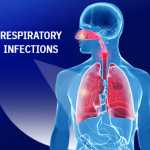The Difference Between COVID-19 and Influenza
You might be among those who have experienced respiratory viruses such as COVID-19 and have certainly contracted influenza. Both are common viral illnesses affecting the respiratory system. However, what is the difference between COVID-19 and influenza? Despite significant similarities in symptoms and complications, their health impacts can vary from person to person.
In this article, we will explore the difference between COVID-19 and influenza. But before delving into these distinctions, let’s take a brief look at each virus.
- Coronavirus (COVID-19)
- Influenza
- The Difference Between COVID-19 and Influenza
- Similarities Between COVID-19 and Influenza
- Prevention of COVID-19 and Influenza
Coronavirus (COVID-19)
COVID-19 is a viral disease that affects the respiratory system. There are seven types of coronaviruses, three of which cause mild symptoms similar to the common cold. The other three can lead to severe illnesses:
SARS-CoV:
This virus causes Severe Acute Respiratory Syndrome (SARS). It was first identified in China in 2002, infecting over 8,000 people and resulting in approximately 774 deaths. No new cases have been reported since 2004.
MERS-CoV:
Responsible for Middle East Respiratory Syndrome (MERS), this virus emerged in Saudi Arabia in 2012. It has infected over 1,200 individuals, with around 449 fatalities. Sporadic cases continue to occur in Middle Eastern countries.
SARS-CoV-2:
The novel coronavirus responsible for COVID-19, which led to a global pandemic declared by the World Health Organization. It was first identified in China at the end of 2019, initially presenting as cases of pneumonia of unknown origin.
As of now, there is no specific cure or vaccine that completely eradicates COVID-19. Although various vaccines have been developed globally—such as those by Gamaleya Institute (Russia), AstraZeneca, Pfizer-BioNTech, Moderna, Johnson & Johnson, and Sinopharm—they do not offer complete protection. Treatment primarily focuses on managing and alleviating symptoms.
Influenza
Influenza is an acute respiratory infection caused by various influenza viruses, including:
Type A Influenza:
This type can infect both animals and humans, though it is more prevalent among humans. Transmission occurs through contact with infected individuals, contaminated surfaces, or shared environments.
Type B Influenza:
Unlike Type A, this virus spreads only among humans and is generally less severe.
Type C Influenza:
Found in humans, this type is milder than Types A and B and does not cause epidemics.
Influenza is widespread globally, and most individuals recover without the need for medical treatment. The virus spreads easily through sneezing or coughing. Treatment aims to relieve symptoms, with vaccination being the most effective preventive measure. Individuals with influenza should rest and consume plenty of warm fluids. Severe cases may require regular medical monitoring.
The Difference Between COVID-19 and Influenza


Similarities Between COVID-19 and Influenza
Despite their differences, COVID-19 and influenza share several characteristics:
Both viruses primarily spread through respiratory droplets produced when an infected person coughs, sneezes, or talks.
Neither illness can be treated with antibiotics, as they are viral infections.
Treatment for both focuses on symptom management. Severe cases may require hospitalization and supportive care, such as mechanical ventilation.
Common symptoms include fever, cough, headache, muscle and joint pain, sore throat, and extreme fatigue.
Prevention of COVID-19 and Influenza
To prevent infection from both viruses, it is essential to:
Maintain regular hand hygiene by washing and sanitizing hands frequently.
Avoid close contact with individuals who are sick or exhibit symptoms.
Use tissues or the elbow to cover the mouth and nose when sneezing or coughing.
It is challenging to distinguish between influenza and COVID-19 based solely on symptoms due to their similarities. Therefore, it is imperative to consult a healthcare professional for accurate diagnosis and undergo specific testing to determine the exact illness. Early treatment can significantly reduce the risk of severe complications.






